Have you ever tried to read a research study on PCOS and thought: “Ok, that’s interesting, but how does this help me now!?”
Yeah, I have done the same thing! The good news is that some recent research on PCOS and exercise is giving us a better idea of how we can use our workouts to reduce symptoms and start feeling better today. Here are three interesting studies that take a closer look at the connection between PCOS symptoms and your workout.
A basic cardio routine could jump-start your period and improve fertility.
Researchers at the King Saud University in Riyadh found that PCOS women could improve their hormonal balance with a simple cardio workout. In fact, 43.3% of the women who participated in the study started ovulating, and 56.7% of the women restored their menstrual cycle after following a simple cardio program for 12 weeks. Plus, PCOS study participants reduced their BMI by 5 points on average.
How they did it:
Three times a week the study participants walked on a treadmill for a total of 45 minutes. They spent about 10 minutes gradually warming up to a pace that raised their heart rate to 65-75% of their maximum heart rate. They walked at that pace for about 25 minutes and spent 10 minutes cooling down. You can find out what 65-75% of your maximum heart rate with this online calculator.
What to take away:
You can improve your hormonal balance and lose weight just by walking on a regular basis. So, if you’re not comfortable with the gym, walking might be a good place to start.
Strength training can lower testosterone and improve your quality of life.
Researchers in Brazil followed 43 women with PCOS as they participated in a 16-week strength training program. After 16 weeks of strength training, the PCOS participants saw a significant decrease in their testosterone levels and reported a modest improvement in their overall quality of life.
How they did it:

What to take away:
Many women worry that strength training might increase male hormones. However, there isn’t evidence to support this idea, and in the case of this study the opposite was true; total blood testosterone levels decreased in the study participants after 16 weeks of focused resistance training.
Lifting weights can build up libido while shrinking anxiety and depression.
Low sex drive, anxiety, and depression are common PCOS symptom that can have implications for your mental health and reproductive future. A study published in The Journal of Sexual Medicine found that PCOS study participants reported increased sex drive, better quality sex, less anxiety, and depression after completing a 16-week strength training program.
How they did it:
Study participants followed a basic strength workout like the one in the previous study. I suspect you could see the same benefits from any style of strength workout that steadily increases in difficulty. The key to getting the most out of strength training is to keep pushing yourself, so you become stronger and gain more lean muscle.
What to take away:
Don’t forget to pay attention to how working out influences other areas of your life. You may see improvements in your mood or your sex life long before you drop a dress size. Taking stock of those added benefits can keep you motivated and positive.
PCOS is a complicated condition that impacts many areas of a woman’s life. Even though we don’t have all the answers, right now one thing remains clear: exercise improves many different PCOS symptoms.

About Erika
Erika Volk is a certified personal trainer, Nutrition Coach, and fitness writer. She holds certifications from the American Council on Exercise (ACE), Precision Nutrition, TRX and she is the creator of the PCOS Fit Studio workout videos. Erika believes that lifestyle modifications are the best treatment for PCOS. If you want to learn more about how exercise can alleviate PCOS symptoms, please visit her website at erikavolkfitness.com.
- sustainable pcos weight loss strategies
- Over 5500 women have done it and seen results
- [bonus] Done for you pcos meal plans
- [bonus] intermittent fasting for pcos course
- [BONUS] personalised nutrition plan
JOIN OVER 5,500 OTHERS








